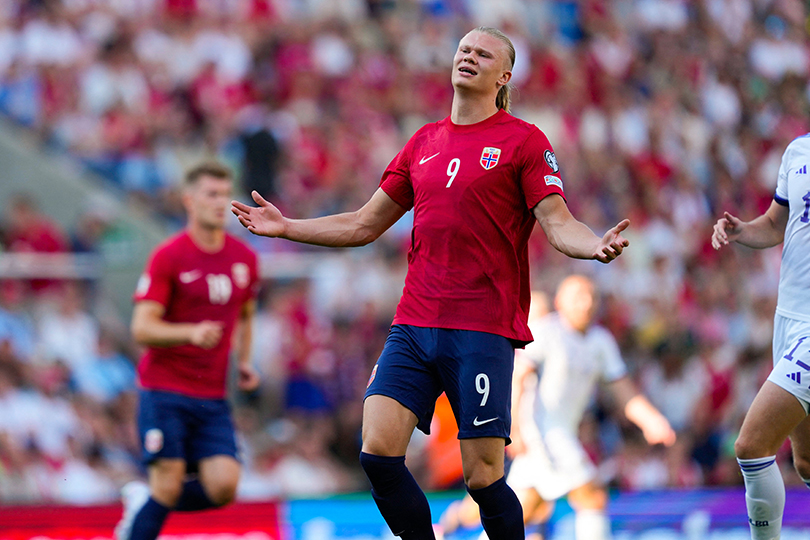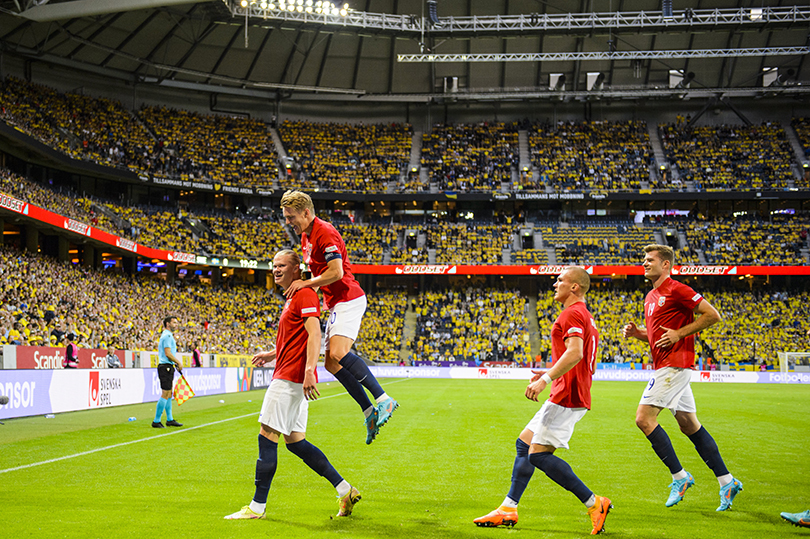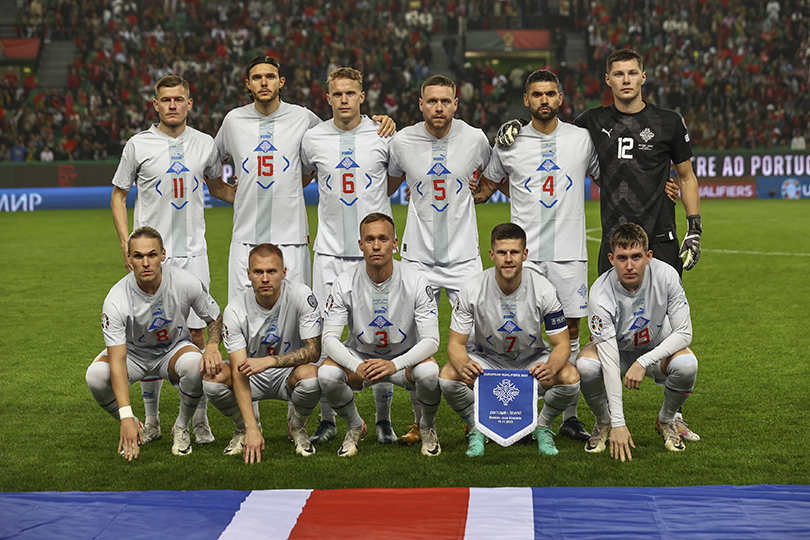
“One thing is for sure, a World Cup without me is nothing to watch,” declared Zlatan Ibrahimovic in November 2013, after Sweden failed to make it to Brazil.
It was a typical Zlatan exaggeration, but one of the finest and most marketable players on the planet had missed out on the 2014 World Cup, and the tournament could only be poorer for it. Logically, fewer superstars involved must surely mean fewer viewers, and less money generated.
Then, Zlatan was one of just many superstars – fourth in the Ballon d’Or that year, he’d missed out on qualification in a titanic play-off match against Cristiano Ronaldo’s Portugal. Lionel Messi and Neymar were around for that tournament, too.
This year, Erling Haaland finished second in the Ballon d’Or, beaten only by Messi, yet Europe’s finest player will not be at Euro 2024.
The draw for the tournament will be made today, but already Norway have been eliminated without the opportunity of a play-off, despite finishing one place off qualification in their group, and being ranked 24th in the Nations League, too. Reminder: there are 24 teams at the Euros.
How did this happen? True, Norway didn’t perform as well as some might have expected in qualifying. Some might have fancied a side including Haaland and Martin Odegaard to finish above Scotland, but that wasn’t how it turned out.
Decisively, Steve Clarke’s side scored twice in the final three minutes to come from behind and win in Oslo – had Norway hung on to the lead given to them by Haaland’s penalty, they would have qualified automatically.
Without that, their remaining hopes rested on making the play-offs, determined via results in the most recent Nations League. Then, Norway were drawn with Serbia, Sweden and Slovenia, probably the toughest group in League B. They finished second behind Serbia, but picked up a respectable 10 points from six games – winning in both Belgrade and Stockholm, thanks to goals from Haaland.

Despite that, they were pipped to a play-off spot – based on Nations League performance – by Iceland, who have never won a single Nations League game in 14 attempts, since the format was introduced three editions ago.
How did Iceland make it ahead of Norway? An extraordinarily fortunate sequence of events. In the first Nations League, Iceland had just reached the quarter finals of Euro 2016, so were placed into League A. From there, it was all downhill.
Drawn into a group with Switzerland and Belgium, they lost all four matches – 6-0, 3-0, 2-1 and 2-0 – and were relegated to League B.
That was until the Nations League was restructured for the second edition, and groups were increased from three teams to four. Relegated teams got a reprieve, so Iceland were back in League A – only to promptly get relegated again. Drawn into a group with Belgium, England, Denmark, they lost all six games – 1-0, 5-1, 3-0, 2-1, 2-1 and 4-0.
In League B for the most recent edition of the Nations League, they then had another stroke of luck, albeit in unwanted circumstances. Drawn with Russia, Israel and Albania, the group’s strongest team were kicked out when UEFA banned Russia following their invasion of Ukraine.
Suddenly, Iceland were in a much easier three-team group with Israel and Albania – still, they didn’t win a single game. Israel won the group, although Iceland drew all four of their matches to finish second.
That was enough to put them marginally ahead of Norway in the League B rankings – to compensate for one group only having three teams following Russia’s removal, Norway were stripped of the six points they secured from the worst team in their own group, Sweden.
That put them on four points, the same as Iceland, but with a goal difference of minus two.

So the Nations League finished with Iceland as the 23rd best team in Europe, and Norway in 24th. Given that 20 teams would qualify automatically for the Euros, joining Germany as hosts, and 12 more teams went into the play-offs, determined by Nations League ranking, it still looked good for Norway to get a play-off place.
That was until five teams below them in the rankings – Slovakia, Turkey, Romania, Albania and Slovenia – all surprisingly qualified for the Euros automatically. Four play-off spots were also reserved for League C teams, going to Georgia, Greece, Kazakhstan and Luxembourg.
Four spots were reserved for League A teams, too, with the expectation that most of them wouldn’t need them – they’d qualify automatically, anyway. But Poland and Wales didn’t, and UEFA's rules stated that if there were any spare spots, one would go to the top team in League D.
That was Estonia, who only had to beat Malta and San Marino to win their Nations League group and earn that play-off spot, then finished bottom of their Euros qualification group, with one point from eight games. They lost 5-0 at home to Sweden – the same country Norway had beaten twice in the Nations League.
It all meant Norway agonisingly finished one place short of a play-off spot – the last place went to Iceland, who’d finished fourth in their qualification group, below Luxembourg.
Does that all make Erling Haaland the unluckiest player ever to miss out on a European Championship play-off? Probably yes. Are UEFA now regretting introducing a system that meant Europe’s best player won’t be at the Euros? Maybe yes, too.
The Nations League has had its benefits, replacing pointless friendlies with fixtures that at least mean something – and frankly, I quite enjoy the chaos of it all.
Commercially though, when the continent’s biggest star will be sat at home next summer, UEFA may be pondering whether the qualification system for this particular Euros has turned out to be a mistake.
More Euros stories
Euro 2024: Dates, fixtures, stadiums, tickets and everything you need to know
Official match ball revealed - and it's instantly a classic







